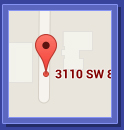Facial Pain Syndrome
Facial pain may occur due to injury or trauma to the face, sinus infection or inflammation, or compression of a facial nerve. Facial pain syndrome, also called trigeminal neuralgia, is characterized by intense intermittent facial pain due to the compression of the trigeminal nerve, a large nerve that extends from the brain to your face. Consequently, the blood vessels rub against the trigeminal nerve root causing nerve irritation. Facial pain syndrome is most commonly seen in women, but rarely occurs before the age of 50 years.
The pain feels like a sudden stabbing or shock-like pain that gets triggered while brushing your teeth, applying makeup, swallowing, touching your face or even with a slight breeze. You may experience the pain in your cheeks, scalp, forehead, around your eyes, nose, lips and jaws, usually on one side of your face. The pain usually last for a few seconds, and may repeat throughout the day for days or even months.
Trigeminal neuralgia can be diagnosed with an MRI scan and treated with a combination of anti-seizure, pain and antidepressant medications. If medications fail to treat the pain or they have undesirable side effects, your doctor might suggest a neurosurgical procedure. The surgery helps to relieve the pressure on your nerve and decreases the sensitivity.
We Accept
Worker's Compensation,
Department of Labor Claims,
Insurance
Types, Causes, Impact,
Management










